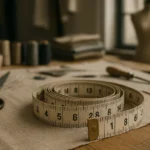
Pre-production in the fashion industry refers to the preparatory phase that occurs before the actual manufacturing or production process begins. It is a crucial stage where all the necessary groundwork is laid to ensure a smooth and efficient production process. Pre-production activities vary depending on the specific industry and the product type, but they generally involve planning, organizing, and preparing all the elements required for production. Here’s a breakdown of pre-production in various industries:
1. Manufacturing Industry
In manufacturing, pre-production involves several key activities:
- Design and Engineering: This stage includes conceptualizing product designs, creating technical drawings, and engineering prototypes. Designers and engineers work together to ensure that the product meets functional requirements and can be feasibly manufactured.
- Material Sourcing and Procurement: Identifying and sourcing raw materials, components, and parts necessary for production. This may involve selecting suppliers, negotiating contracts, and ensuring that materials meet quality standards.
- Tooling and Equipment Setup: Designing and preparing production tools, molds, and equipment needed for manufacturing. This includes setting up machinery, calibrating equipment, and conducting test runs to ensure everything operates smoothly.
- Process Planning and Optimization: Developing production processes and workflows, determining production schedules, and optimizing efficiency. This may involve conducting time and motion studies, identifying bottlenecks, and implementing lean manufacturing principles.
- Quality Control and Assurance: Establishing quality control measures to ensure that products meet specified standards and requirements. This includes developing inspection procedures, testing prototypes, and implementing quality management systems.
- Training and Skill Development: Providing training to production staff on new processes, equipment, and techniques. This ensures that employees are equipped with the necessary skills and knowledge to perform their roles effectively.
2. Film and Television Industry
Pre-production in the film and television industry involves several key stages:
- Script Development: Writing, revising, and finalizing scripts for films, TV shows, or commercials. This may include script readings, storyboarding, and developing shot lists.
- Casting and Talent Acquisition: Auditioning actors, casting roles, negotiating contracts, and organizing rehearsals. This ensures that the right talent is selected for each role and that schedules align with production timelines. The casting director plays a pivotal role in this phase, organizing auditions, collaborating with the director on final casting decisions, and managing contractual details for the talent. Additionally, the line producer oversees the project’s budget, ensuring efficient allocation of resources for talent acquisition.
- Location Scouting and Set Design: Finding suitable filming locations, obtaining permits, and designing sets. This involves scouting for locations that match the script’s requirements and designing sets that bring the story to life. The production designer is integral to this process, planning set designs and props, and ensuring the visual feel of the film aligns with the director’s vision.
- Production Planning and Scheduling: Planning shooting schedules, coordinating logistics, and organizing production crews. This ensures that filming runs smoothly and efficiently, minimizing downtime and costs. The first assistant director is crucial in creating detailed planning documents and managing the production schedule, ensuring all logistical aspects are addressed. The production schedule is a key component, outlining the timeline for shooting each scene, considering actor availability and location permissions.
- Costume, Makeup, and Props: Designing costumes, makeup, and props that complement the characters and setting. This involves sourcing or creating costumes, conducting makeup tests, and acquiring or creating props needed for filming.
- Production Coordination: The production coordinator plays a vital role in handling logistics, paperwork, and overall coordination, ensuring the smooth execution of the production phase.
- Production Management: Production managers oversee the pre-production process, working alongside the director, producer, and other key figures to ensure the project’s success.
3. Construction Industry
In the construction industry, pre-production involves several key activities:
- Project Planning and Design: Developing architectural plans, engineering designs, and construction drawings. This includes conceptualizing the project, creating blueprints, and obtaining necessary approvals.
- Permitting and Regulatory Compliance: Obtaining permits, approvals, and licenses required for construction projects. This involves navigating regulatory requirements, submitting permit applications, and ensuring compliance with building codes and zoning regulations.
- Material Procurement and Logistics: Sourcing and procuring construction materials, equipment, and supplies. This includes ordering materials, scheduling deliveries, and coordinating logistics to ensure that materials are available when needed.
- Site Preparation and Mobilization: Clearing and preparing construction sites, mobilizing equipment, and setting up temporary facilities. This involves site surveys, grading, excavation, and installation of temporary utilities.
- Safety Planning and Training: Developing safety plans, conducting risk assessments, and providing safety training to workers. This ensures that construction sites are safe and that workers are aware of potential hazards and how to mitigate risks.
In the world of fashion, the journey from conceptualizing a design to seeing it strut down the runway or displayed in a store involves numerous stages. One of the crucial phases in this journey is pre-production. Pre-production is the foundation upon which the entire creation process stands, encompassing a series of essential tasks that set the stage for the actual production of garments. In this article, we will delve into the definition of pre-production, and its significance in the fashion industry, and explore examples to better understand its role in bringing fashion concepts to life.

Understanding the Pre-production Process
Pre-production refers to the preparatory phase in the fashion production cycle where various activities are undertaken to ensure a smooth transition from design conception to the manufacturing stage. This phase involves meticulous planning, organization, and coordination of resources, materials, and processes essential for the production of garments. A comprehensive pre-production checklist is crucial for organizing these activities effectively, ensuring that all necessary steps are covered before production begins. While pre-production activities may vary depending on the scale and complexity of a project, they typically include the following key components:
1. Design Development
- Creative Ideation: Design development starts with brainstorming and creative ideation sessions where designers explore themes, concepts, and trends. They draw inspiration from a variety of sources such as art, culture, nature, and current events.
- Sketching and Rendering: Once concepts are refined, designers translate their ideas into sketches and renderings. These initial drawings serve as visual representations of the proposed designs, capturing details such as silhouette, proportions, and embellishments.
- Mood Boards: Designers create mood boards to convey the intended aesthetic and mood of the collection. Mood boards typically include images, fabric swatches, color palettes, and other visual elements that inspire and inform the design direction.
- Concept Refinement: Designs undergo multiple rounds of refinement based on feedback from creative directors, buyers, and market research. Designers experiment with different variations, fabrics, and details to fine-tune the collection and ensure it aligns with brand identity and market demand. During this pre-production phase, the pre-production process is meticulously planned and organized, encompassing tasks such as budgeting, scheduling, and coordinating with other departments to ensure that the design development aligns with the overall production goals.
2. Material Sourcing and Procurement
- Supplier Identification: Sourcing teams identify potential suppliers based on factors such as quality, reliability, and ethical practices. They establish relationships with fabric mills, trim manufacturers, and accessory suppliers to secure the necessary materials for production.
- Fabric Selection: Fabrics play a crucial role in determining the look, feel, and quality of the final product. Sourcing teams carefully select fabrics that meet design specifications, performance requirements, and cost constraints. Factors such as texture, drape, and color fastness are taken into consideration.
- Trim and Accessories: In addition to fabrics, sourcing teams procure trims, embellishments, and accessories such as buttons, zippers, and labels. These details add depth and personality to the garments and must complement the overall design aesthetic.
- Negotiation and Costing: Sourcing teams negotiate prices, minimum order quantities, and lead times with suppliers to ensure cost-effectiveness and timely delivery. They also assess the impact of currency fluctuations, tariffs, and shipping costs on the overall production budget. The pre-production stage is critical in material selection and negotiation, ensuring that all materials align with the project’s quality standards and budgetary constraints.
3. Sample Making and Prototyping
- Pattern Making: Skilled pattern makers create paper or digital patterns based on the designer’s specifications. Patterns serve as blueprints for cutting and sewing the fabric into garments and must accurately reflect the intended design and fit.
- Sample Sewing: Sample machinists sew fabric samples based on the patterns provided. These samples are often referred to as “toiles” or “muslins” and serve as prototypes for the final garments. Sample sewing allows designers to test the fit, construction, and functionality of the designs before proceeding to production.
- Fit Testing and Adjustments: Samples undergo rigorous fit testing on fit models or dress forms to identify any fit issues or design flaws. Designers make necessary adjustments to the patterns and samples to achieve the desired fit and proportion.
- Fabric Testing: Fabric samples are subjected to various tests such as colorfastness, shrinkage, and durability to ensure they meet quality standards and perform well during wear and care. The pre-production steps involved in sample making and prototyping are essential for refining the designs and ensuring they meet the project’s aesthetic and functional requirements.
4. Tech Pack Creation
- Detailed Specifications: Tech packs contain detailed specifications and instructions for each garment style. This includes flat sketches, measurements, construction details, fabric and trim information, and labeling requirements.
- Grading and Sizing: Tech packs specify grading rules for scaling the size of the garment across different sizes. Grading ensures consistency in fit and proportion across the size range and is essential for mass production.
- Construction Details: Tech packs outline the construction methods and techniques required to assemble the garment, including seam types, stitching details, and finishing treatments.
- Labeling and Packaging: Tech packs include labeling requirements such as brand labels, care labels, and size labels. They also specify packaging instructions for shipping and retail display.
5. Production Planning and Scheduling
- Timeline Development: Production planners develop timelines and schedules that outline key milestones and deadlines for each stage of production. This includes design development, material sourcing, sample making, production, and delivery.
- Resource Allocation: Production planners allocate resources such as manpower, machinery, and materials based on production requirements and capacity constraints. They optimize production processes to maximize efficiency and minimize waste.
- Quality Control: Production planners establish quality control measures to ensure that garments meet quality standards and specifications. This may involve conducting inspections at various stages of production and implementing corrective actions as needed.
- Logistics Coordination: Production planners coordinate logistics such as transportation, customs clearance, and warehousing to ensure timely delivery of materials and finished goods. They monitor production progress and address any issues or delays that arise during the production process.
By paying careful attention to each component of pre-production, fashion brands can streamline their processes, minimize risks, and deliver high-quality products that resonate with consumers. The thoroughness of the pre-production process is instrumental in laying the foundation for a successful production, ensuring that every aspect of the garment’s design and manufacturing is meticulously planned and executed.

Pre-production Checklist Examples in the Fashion Industry
To exemplify the paramount importance of pre-production in the multifaceted landscape of the fashion industry, let’s explore a diverse array of scenarios across different segments. Pre-production activities lay the groundwork for the entire production process in fashion, ensuring that every aspect from design to delivery is meticulously planned and coordinated to support the entire production.
1. Haute Couture
Within the realm of haute couture, where opulence intertwines with craftsmanship, pre-production transcends mere preparation—it becomes an art form in itself. Esteemed houses like Chanel, Dior, and Valentino dedicate extensive resources and time to pre-production endeavors.
Here, the process entails meticulous hand-sketching of intricate designs, sourcing of rare and exquisite fabrics from around the globe, and the creation of bespoke patterns tailored to the unique measurements of individual clients.
Each garment undergoes a series of meticulous fittings and adjustments, ensuring a flawless fit and impeccable finish. Pre-production thus emerges as a labor-intensive yet indispensable phase, laying the groundwork for the creation of couture masterpieces that epitomize luxury and refinement.
2. Fast Fashion
In stark contrast to haute couture, fast fashion juggernauts such as Zara, H&M, and Forever 21 operate within a whirlwind of rapid production cycles and trend-driven designs. Within this dynamic environment, it is possible to characterize pre-production by a relentless pursuit of speed and efficiency.
Utilizing cutting-edge technologies like computer-aided design (CAD) software and automated pattern-making systems, these brands streamline the design and development process with unparalleled precision. Material sourcing becomes a global endeavor, with fabrics and trims sourced from diverse corners of the world to meet stringent deadlines and cost constraints. Production planning pivots on minimizing lead times and maximizing flexibility, allowing brands to swiftly adapt to ever-evolving market dynamics and fleeting fashion trends.
3. Sustainable Fashion
Against the backdrop of heightened environmental consciousness, sustainable fashion brands are revolutionizing the pre-production landscape by placing ethical sourcing, eco-friendly materials, and transparent supply chains at the forefront.
Visionary pioneers such as Patagonia, Stella McCartney, and Eileen Fisher embark on a holistic journey toward sustainability, beginning from the earliest stages of pre-production. Here, the emphasis lies on meticulously selecting organic, recycled, or responsibly sourced materials that uphold ecological integrity without compromising on quality or style.
Waste reduction takes center stage through the implementation of efficient pattern-making and cutting techniques, while manufacturing facilities adhere to stringent standards of fair labor practices. Pre-production thus emerges as a strategic imperative, serving as a tangible manifestation of brands’ unwavering commitment to sustainability—a harmonious fusion of conscience and creativity that resonates deeply with environmentally conscious consumers.
Conclusion
Pre-production in the fashion industry serves as the cornerstone of the fashion production cycle, laying the groundwork for successful garment manufacturing. Incorporating production management software enhances pre-production planning and efficiency by centralizing and organizing various elements, streamlining the fashion shoot planning procedure, and ensuring a successful production.
By understanding pre-production and its integral role in the fashion industry, designers, brands, and manufacturers can navigate the complexities of the production process more effectively. Thorough pre-production planning facilitates a smooth transition into the production phase, where detailed planning and scheduling of production activities, akin to a script breakdown and shooting schedule in filmmaking, ensure a seamless production process. Whether creating couture masterpieces, responding to fast-paced trends, or championing sustainability, pre-production empowers fashion professionals to bring their creative visions to life with precision, efficiency, and purpose.





Leave a Reply